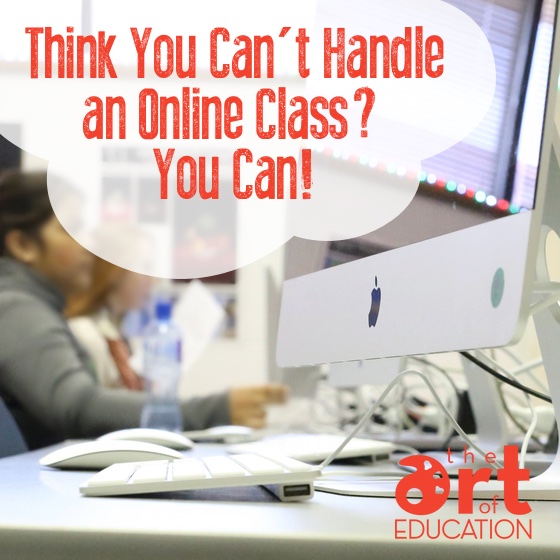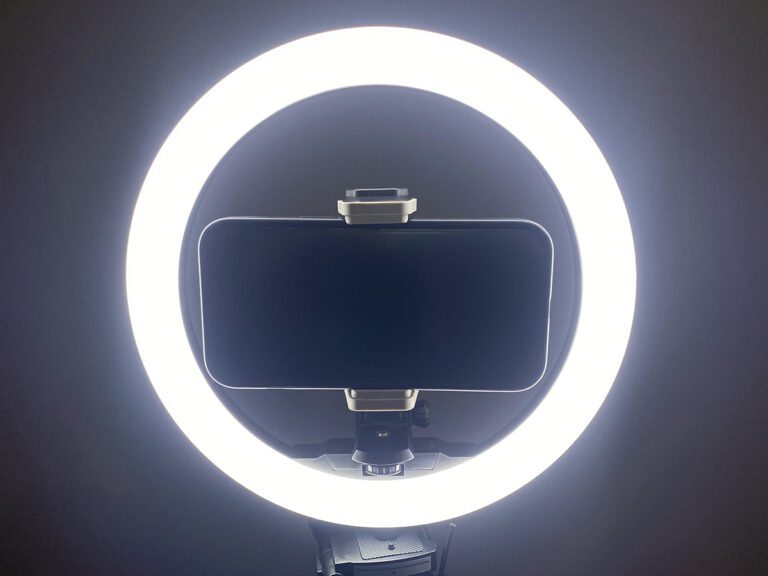Today we welcome a guest post by one of our AOE Instructors, Patricia Christiansen. Patricia also teaches high school art online (yes, you read that right!). Today Patricia is here to tell you why everyone can handle online learning!
Teaching for the Art of Education over the past two years has taught me a lot about the hesitations that teachers have about online learning. Often, right at the beginning of a course, teachers will confess these fears and then later, at the end of the course, share how they worried for no reason.
Today I’m going to share some of the biggest misconceptions I have seen regarding online learning.

Myth #1: Online learning might not be a good fit.
Some teachers fear that the online format may not be the right fit for them. I think new teachers have a feeling that the classes might be impersonal, but we spend time at the beginning of each class introducing ourselves, asking questions, and getting to know each other. Additionally, the coursework offers reflection opportunities so teachers are able to share detailed reactions to readings or share things they have tried in their own classrooms. In these relevant discussions, we get to know each other and our teaching styles quite well!
Myth #2: Online learning requires advanced tech skills.
Along the same lines, teachers occasionally mention that they think the technology may be too advanced, especially in a class like iPads in the Art Room. Fortunately, we make the most of video tutorials and illustrated guides online so that teachers can get the hang of using the system right away. Sometimes if a process is troubling, we will talk through it on the phone. Our Customer Service Guru is also willing to go the extra mile for teachers. If you want to get a sneak peek of the platform we use, check out this interview with our Educational Director Heather Crockett.
Myth #3: Online learning might be isolating.
Collaboration is at the heart of AOE classes. It’s easy to master taking AOE classes because the community is so supportive. Teachers share everything including what works, what doesn’t, their struggles, and their hopes for the classroom. Peer coaching is also abundant as everyone has their own unique perspective to offer the group. I check in weekly with teachers online, offering reminders about the schedule and encouraging questions. Throughout the week, we are also communicating on the discussion boards so that no one will feel as though they are working through the materials alone.
One of our class participants had this to say:
“One thing I will never forget is how the internet can make things seem so enormous and small at the same time. During our introductions, I noticed that there was a participant from another country and, at the same time, there was another participant that went to the same university that I did in North Carolina. I asked her if she knew my mentor, who I did my student teaching with. Not only did she know her, she had taken a class from her and observed her many times! I have really enjoyed the way technology has pulled teachers from all over the country and world together for this class.”
AOE classes are worth the risk.
The most common thing that I hear during the conclusion of courses is that teachers won’t forget the feeling of being part of a cohort, the feeling that they are not alone. Teachers discover that the idea of content-specific professional development with other art teachers from all over the world was worth taking the plunge into online learning. Just like in the classroom, being able to see students grow and learn is a thrill, so hearing how my students overcome their fears of online learning is incredibly rewarding.
Thanks so much, Patricia! If you’re ready to take the plunge into online learning, you can check out all of our offerings right here.
What fears do you have about taking an online class?
What has surprised you about taking an AOE class?
Magazine articles and podcasts are opinions of professional education contributors and do not necessarily represent the position of the Art of Education University (AOEU) or its academic offerings. Contributors use terms in the way they are most often talked about in the scope of their educational experiences.





